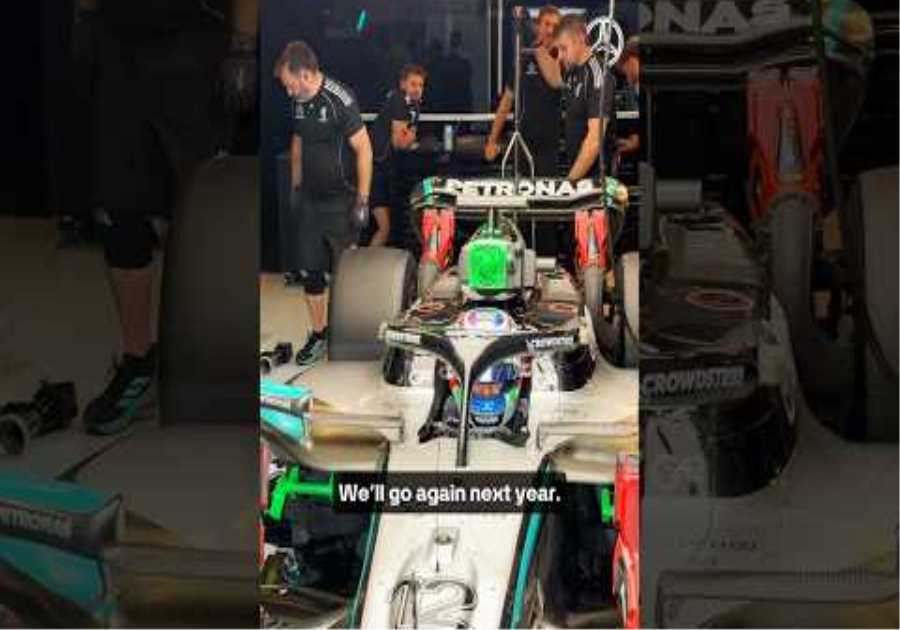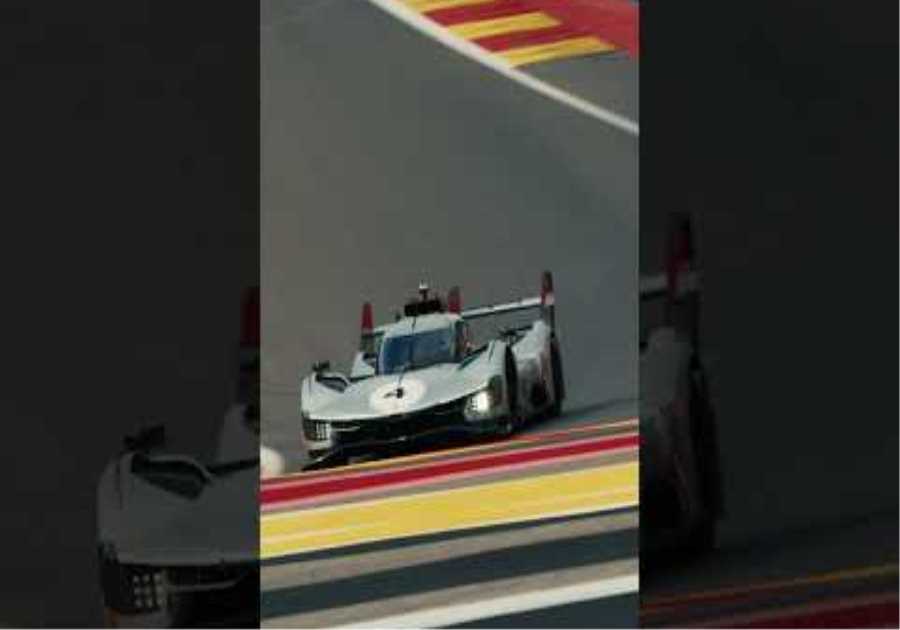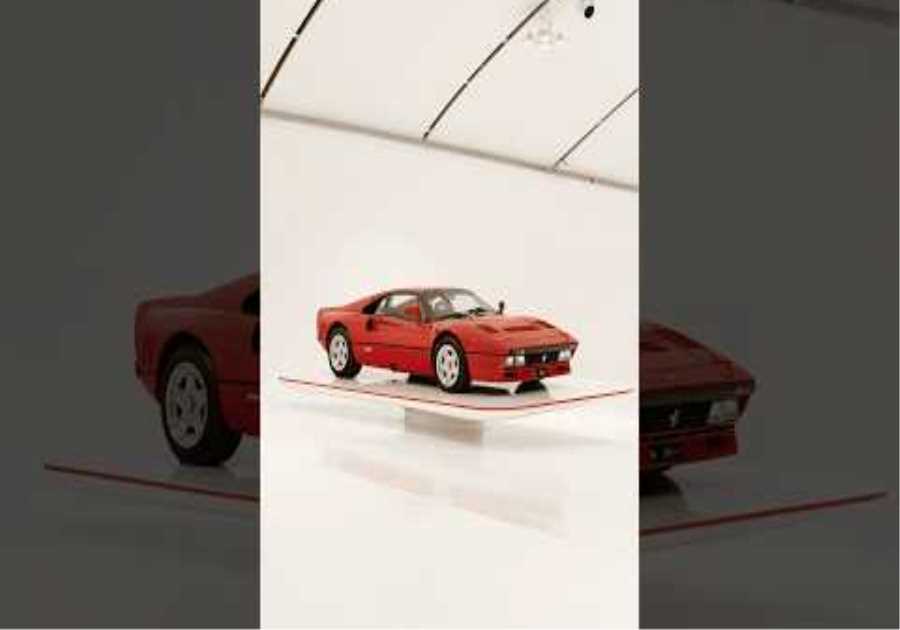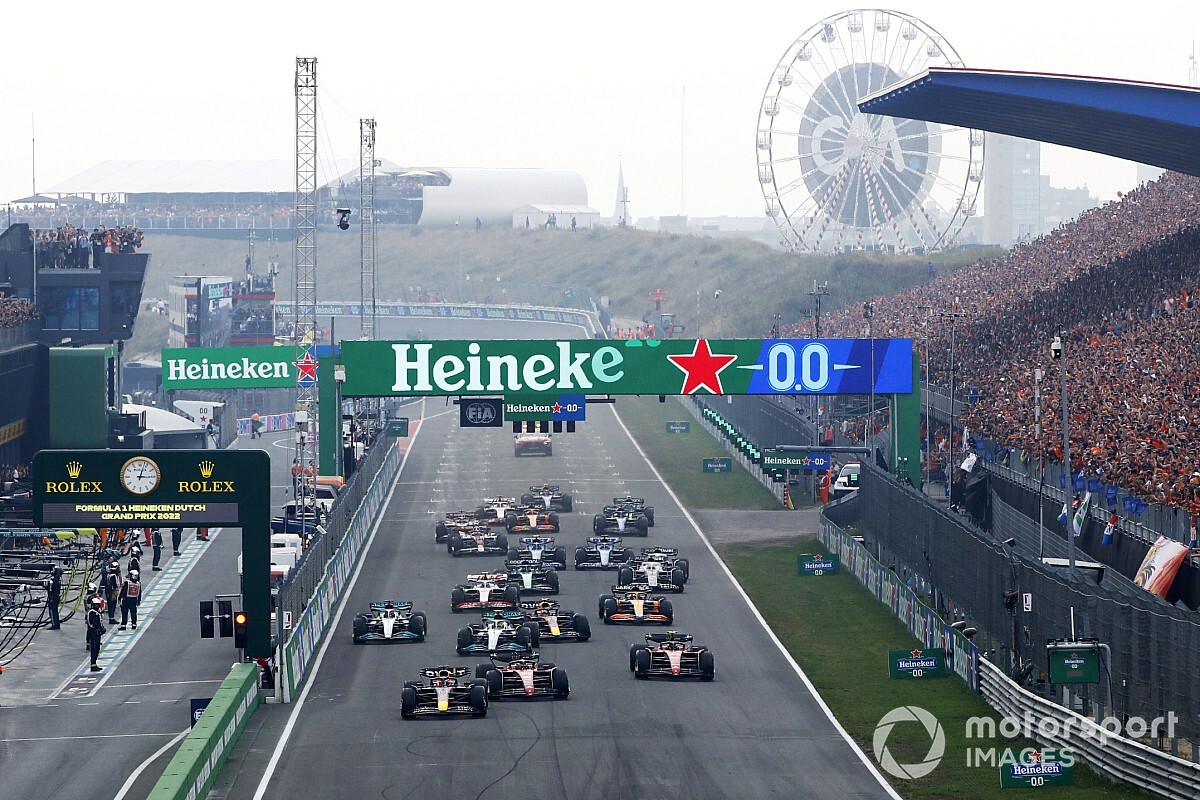
The capacity crowd at Zandvoort was treated to exactly what it wanted as Max Verstappen triumphed on home soil to take his win tally for 2022 into double digits. For those watching on TV, they were treated to what they wanted too as, after the race initially appeared to be a damp squib, it evolved beautifully into a tactical grudge match with a satisfying late pass for the spoils.
It was Mercedes that came closest to knocking Verstappen and Red Bull off the top stop of the podium, thanks to inspired strategy and blistering speed that was undone by ill-timed virtual and full safety cars. This came as Ferrari faltered – its pace failing to inspire and its pitstops sticking to the poor form of this season – and Sergio Perez was well adrift of his benchmark team-mate.
There were also plenty of talking points off track as the Contract Recognition Board revealed its verdict on the Alpine-McLaren dispute over Oscar Piastri and another weekend passed when Porsche didn’t announce its partnership with Red Bull…
Those elements considered, here are 10 things we learned from the 2022 Dutch Grand Prix.
Verstappen is on 10 wins this season – can he break the record of 13?
Photo by: Erik Junius
1. Verstappen can now focus on breaking records
Another sublime triumph for Verstappen stretches his standings lead to 109 points. With seven rounds and a sprint race to play, only five drivers (down to Lewis Hamilton in sixth on 158 points compared to the leader’s 310) can mathematically catch Verstappen. Realistically, however, a second title is already on its way to the Red Bull ace.
It would take a spectacular and unprecedented downfall for Verstappen not to have his name engraved on the championship trophy for a second time in a row. With that in mind, perhaps it’s the record books that are next to be in need of rewriting.
Verstappen’s fourth win in succession takes his tally for the season to 10. The record for the most lucrative campaign is shared by Michael Schumacher in 2004 and Sebastian Vettel from 2013, when both amassed 13 wins. But given Verstappen’s current blistering speed and that a little over a third of the term remains, it’s entirely plausible that the Ferrari and Red Bull greats will statistically be surpassed.
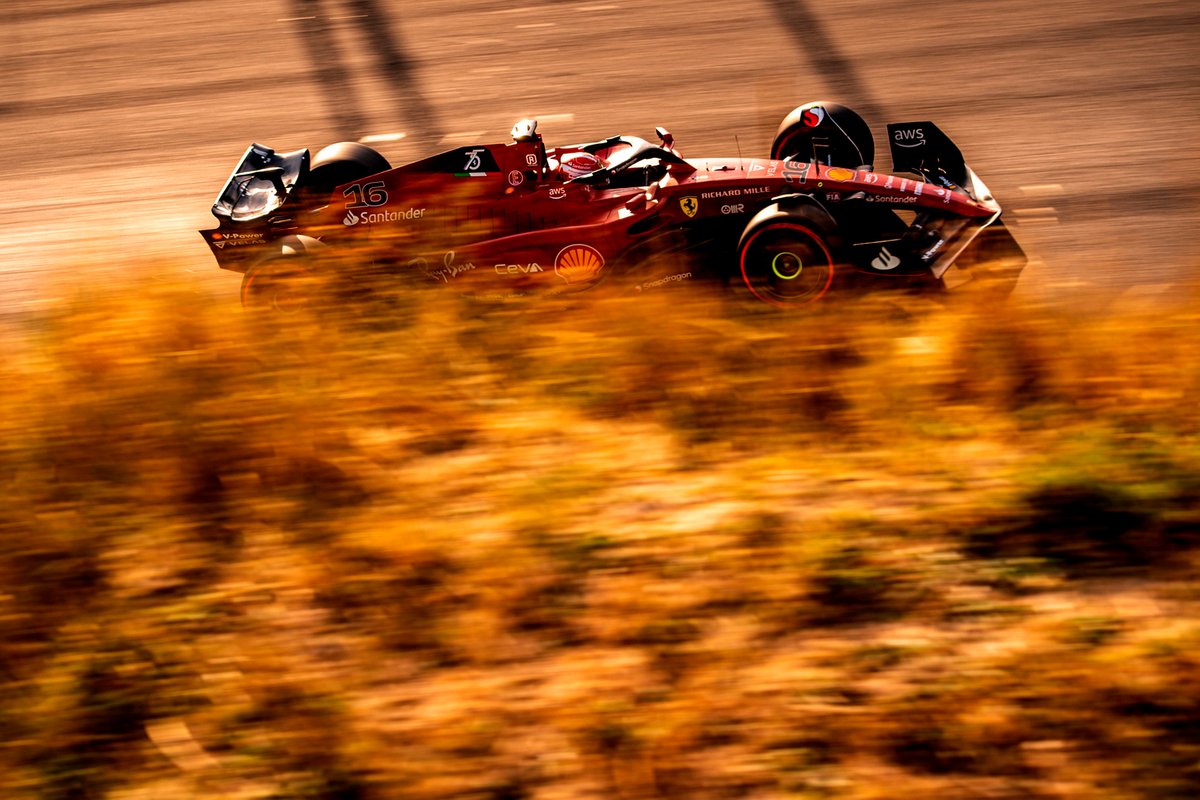
Ferrari continues to drop ever further behind Red Bull in the pecking order
Photo by: Ferrari
2. It’s tough to see where Ferrari’s next win will come from
If the Scuderia had to roll over for Verstappen at Spa, then so be it. The long Kemmel Straight and flat-out final sector were seemingly tailor made for the top speed punch of the rebadged Honda power unit (see how easily Verstappen passed Hamilton on Sunday for the win, despite the 2022 cars not being able to gain as strong a tow as their predecessors). But at least the lithe and fast-accelerating F1-75 could answer back at Zandvoort.
That was the theory, and while Charles Leclerc snared a podium and Carlos Sainz’s cause was significantly stymied by a botched pitstop and 5s penalty for an unsafe release, Ferrari was all too quickly ruled out as a serious threat for victory. Leclerc seemingly kept Verstappen honest during the opening 10 laps as his gap to the leader hovered just above 1s, but then the defending champion lit the touch paper and disappeared well beyond DRS range.
PLUS: How Mercedes overcame Ferrari to become Verstappen’s 2022 Dutch GP win challengers
It was then left to the brace of W13s to take the fight to Verstappen thanks to the Silver Arrows starting on the medium tyres. Ferrari, thereafter, wasn’t in the hunt for the spoils.
As Leclerc debriefed: “We just didn’t have the pace; we weren’t quick enough. So this is the main focus at the moment, to try and bring back the speed that we had at the beginning of the season. We seem to have lost it, a little bit of pace in the in the long runs especially.”
Even if the Scuderia wasn’t to win the Dutch GP, it was supposed to ask much more serious questions of Red Bull than it actually achieved. A visit to high-speed Monza next time out might not be any more prosperous.
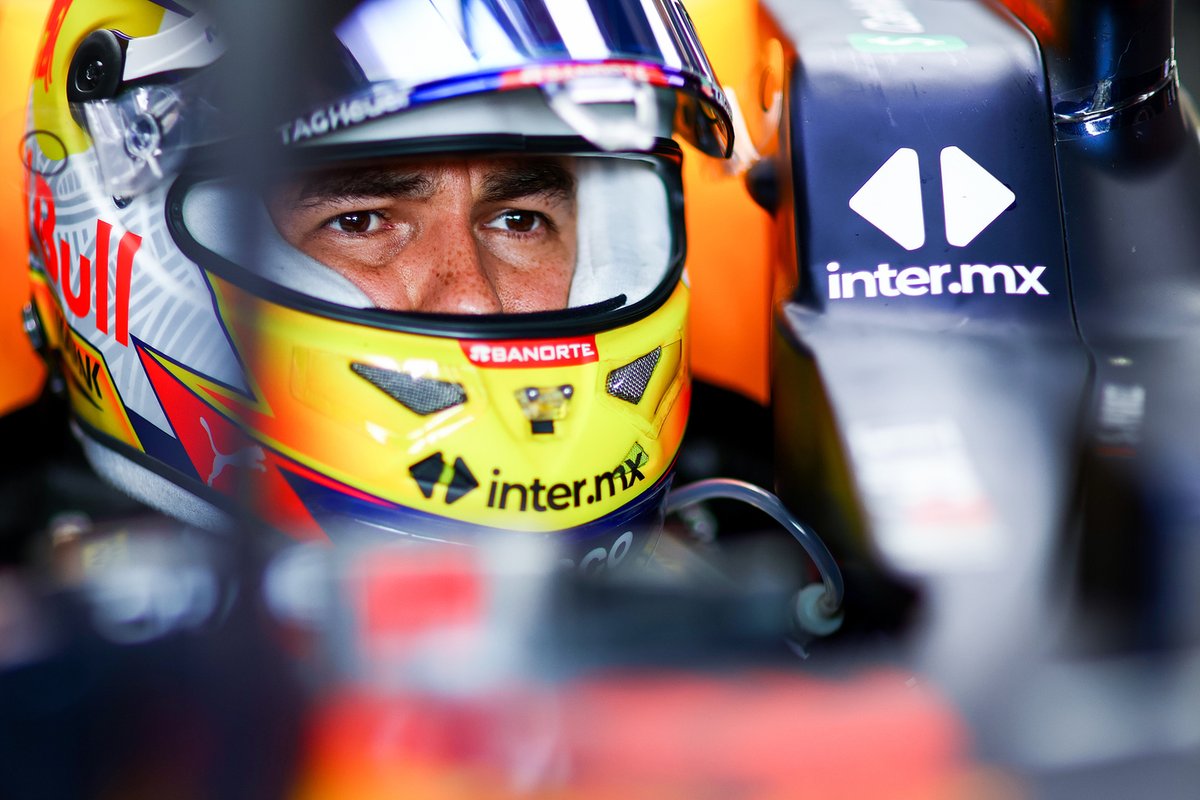
Perez put in a distinctly off-colour performance at Zandvoort
Photo by: Red Bull Content Pool
3. Perez’s timing was perfect, his driving much less so
After his win in Monaco plus outqualifying Verstappen in Azerbaijan, Perez’s stock was soaring as he appeared to have mastered the return of ground-effects in F1. He had a two-year contract extension at Red Bull to show for it (signed before his principality success) as the Mexican appeared to have resolved the lingering problem concerning the second seat at the team.
PLUS: How Perez impressed to earn his new contract
It can be argued that he was fortunate to sign when he did. For Perez yet again delivered the kind of substandard weekend that had Daniil Kvyat, Alex Albon and Pierre Gasly dropped back to Toro Rosso/AlphaTauri. He spun in qualifying to wind up a cavernous 0.735s adrift of Verstappen at Zandvoort and duly allowed both Ferraris and a Mercedes to split the RB18s on the grid.
Then Perez couldn’t hold a candle to Verstappen’s race pace, or the demonstrably slower Mercedes, Ferraris and even the Alpine of Fernando Alonso. In truth, he most effectively seemed to aid the Red Bull and Verstappen cause by delaying Hamilton’s hard tyre overtake by one lap after he squeezed the Briton into Turn 1. Otherwise, he was not there to play the tacit rear-gunner role that is expected of him.
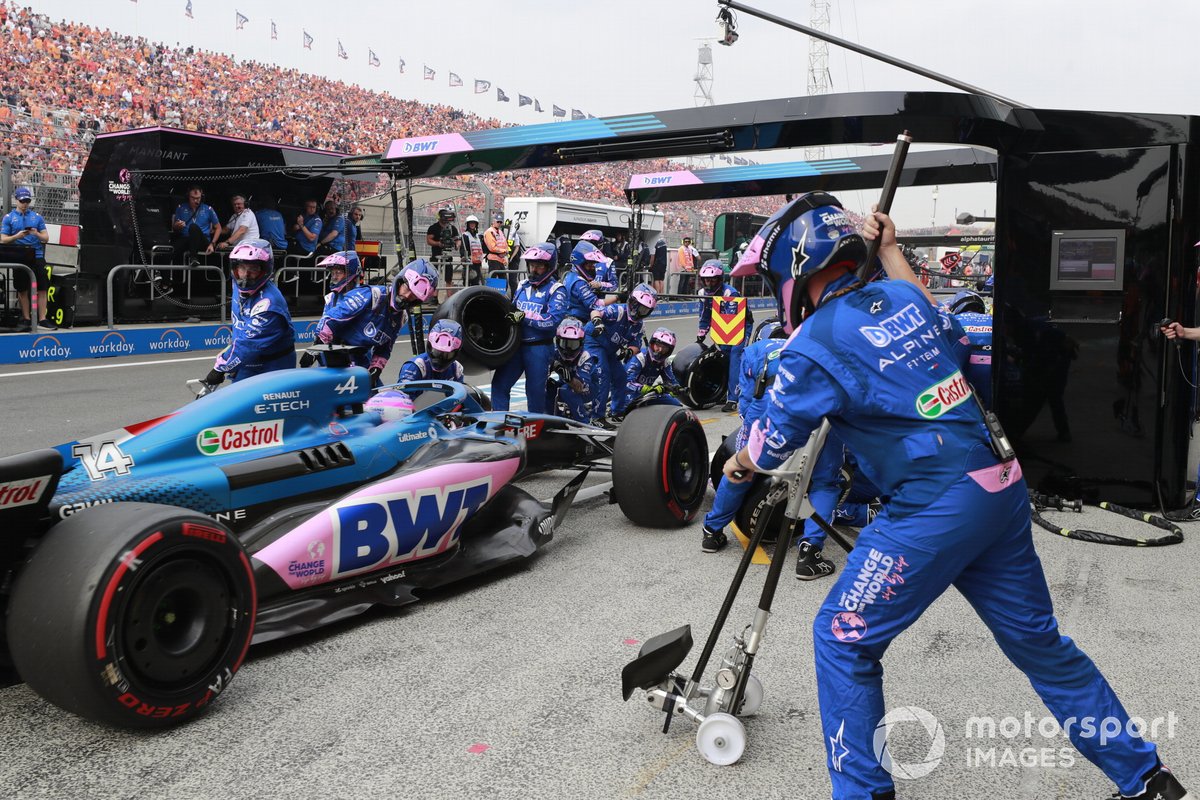
Poor strategies cost Alpine at the start of the year – but the French squad has upped its game
Photo by: Steven Tee / Motorsport Images
4. Alpine appears to have stopped dropping the strategy ball
Throughout the first half of the campaign, Alpine made heavy weather of guiding the fourth-fastest car on the grid (as per the ‘supertimes’ metric) to fourth in the constructors’ championship. Strategy blunders were leaving the door wide open for McLaren, with its mediocre MCL36 and lopsided attack fronted by Lando Norris.
But Spa and Zandvoort now show that Alpine is a far slicker operation on track – even if its handling of the driver market has been woeful. To overcome a poor qualifying as Esteban Ocon lined up 12th, one spot ahead of team-mate Fernando Alonso, the duo started on softs like most others. But then came the inspired change to hard tyres for a long middle stint.
The pace was better than expected, and even helped Mercedes commit to a white-walled strategy that put it in position to challenge for victory. Alpine, though, got there first. In the process, Alonso pipped Norris to further consolidate the ‘best of the rest’ ranking in the standings.
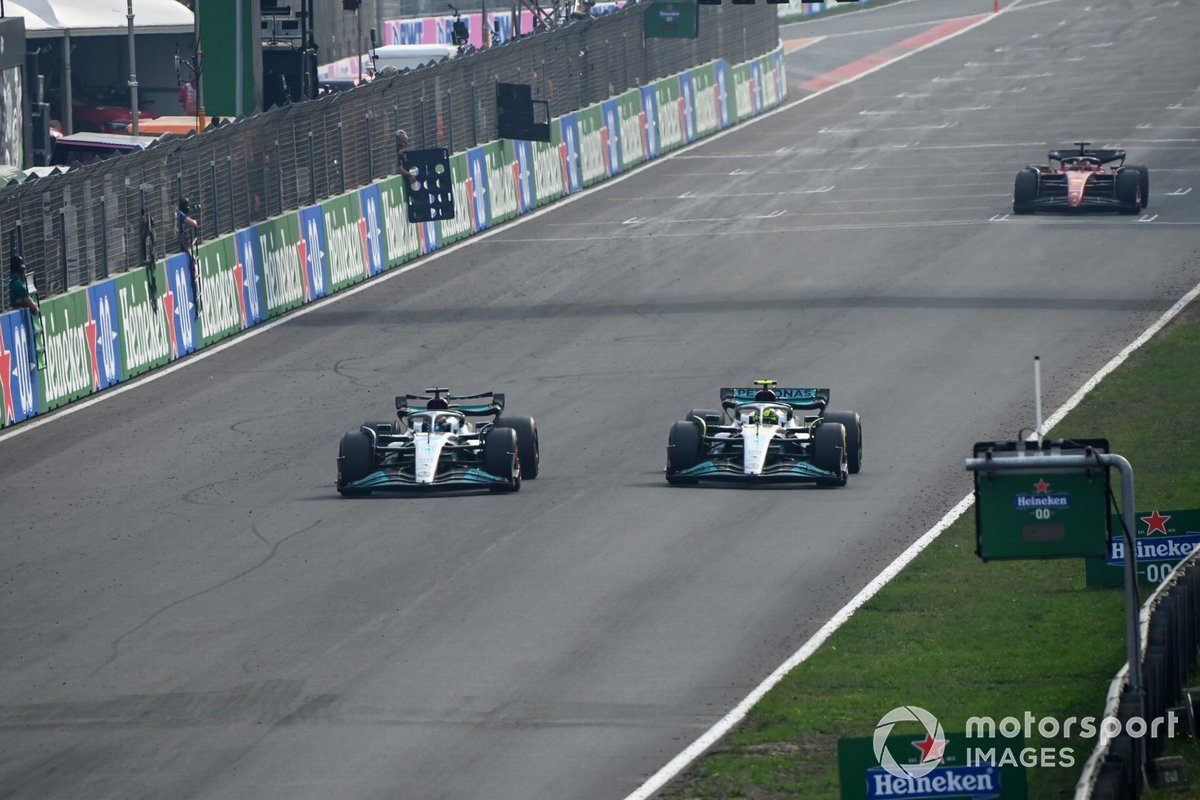
Will Mercedes stick or twist with its W13 concept for next season?
Photo by: Mark Sutton / Motorsport Images
5. How Mercedes handles 2023 makes for a fascinating subplot
That Mercedes was the closest challenger to Red Bull in the Dutch GP and not Ferrari was not solely forged off the back of its starting tyre strategy. The W13s, generally showing far more impressive race pace compared to qualifying all year long, launched on the medium rubber to take a longer first stint before swapping onto hards. While this afforded Hamilton and George Russell track position, it was the speed that impressed most of all.
Hamilton was pinging in purple sectors and fastest laps for fun when he was shod with the theoretically slowest available hard tyres. He was lapping up to 1.5s a lap faster than Verstappen prior to virtual and full-blown safety cars. As such, immediately after the shambles at Spa, Mercedes has shown that it can still deliver on its promise of winning a race this season.
Driver Ratings: 2022 Dutch Grand Prix
But the team remains tight lipped on the “difficult” decision whether to abandon this car concept for 2023. It faces jacking in a car that is rapid on its day and has the potential of a win or two a season but remains plagued by inconsistency. As per 2021 into 2022, the longer it presses on trying to develop that season’s car, the worse the following year might be. As such, if Mercedes continues to keep it coy by not revealing its development decision, the choice it has taken whether to stick or twist might only come to light next year.

The CRB verdict was unanimous on the Piastri fiasco
Photo by: Carl Bingham / Motorsport Images
6. McLaren’s driver contracts are more watertight than Alpine’s
What we didn’t learn during the Dutch GP weekend is that Oscar Piastri will race for McLaren in 2023, because that was already very much on the cards. The Australian had taken to social media to rather publicly declare he wouldn’t be belting up for Alpine next season. As such, even if the Contraction Recognition Board had ruled in Otmar Szafnauer’s favour, there was an expectation that McLaren would have gone ahead and bought the F2 and F3 champion out of his deal to secure his services.
However, the verdict released on Friday saved a few quid as it definitively settled the dispute in favour of the Woking squad with a “unanimous decision”. The CRB statement listed the McLaren paperwork as the “the only contract to be recognised” to leave Alpine still to lock in a team-mate for Esteban Ocon and it is also poised to release its protégé prematurely.
Insight: The real story behind Piastri’s F1 move to McLaren
The CRB verdict further stated that Piastri had inked his new deal on 4 July – a date which raised a few eyebrows…
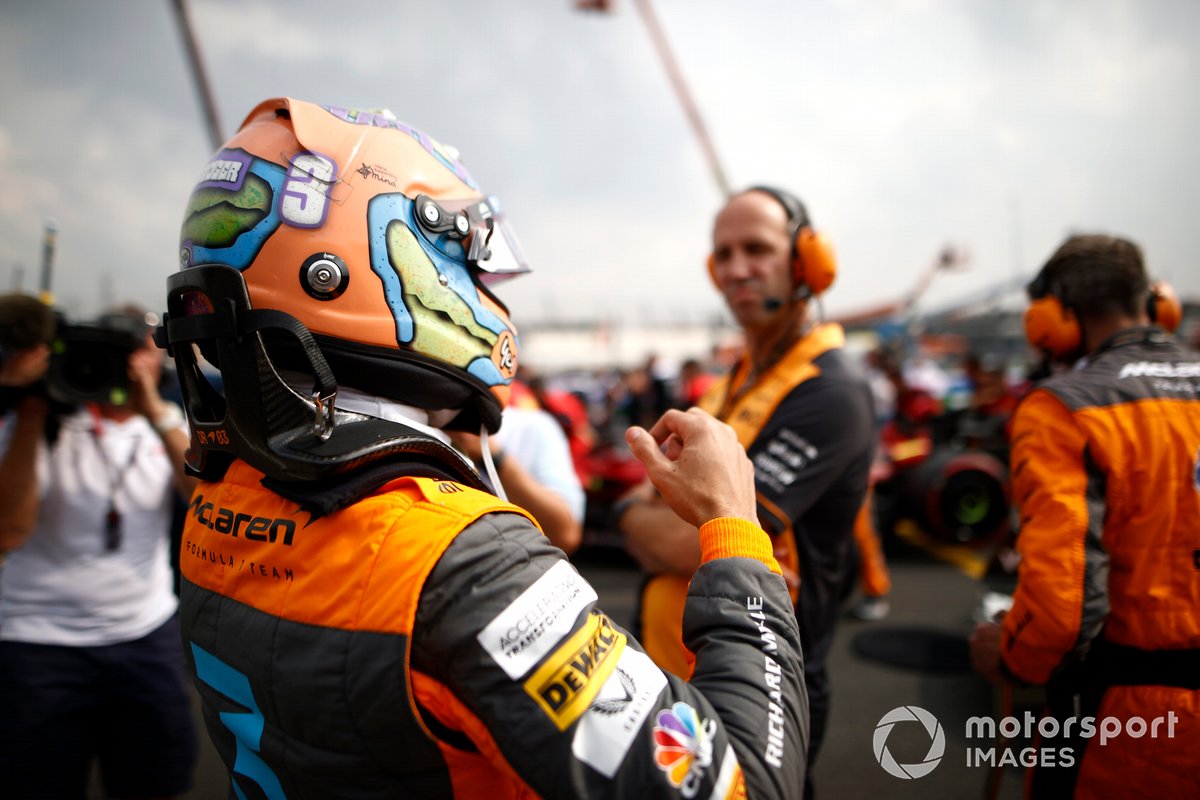
Ricciardo stated his intent to stay at McLaren nine days after Piastri signed his deal
Photo by: Andy Hone / Motorsport Images
7. Piastri was in long before Ricciardo knew he was out
…This was because the newly updated timeline revealed Daniel Ricciardo was on his way out well before the 2021 Italian GP victor himself knew anything about it. It was only during the August summer break that the team and driver settled on a handsome pay off to rip up the contract a year ahead of time and to go their separate ways.
Perhaps more intriguing, as the rumour mill kicked into overdrive concerning any looming Ricciardo and McLaren break-up, the driver felt compelled to state his commitment to the cause and to finding a resolution to his underperformance. Ricciardo therefore issued a social media post reaffirming the security of his position. He posted: “I am committed to McLaren until the end of next year and am not walking away from the sport.”
That went live on 13 July. In other words, Ricciardo was pledging his allegiance nine days after Piastri had signed up to be his compatriot’s replacement.
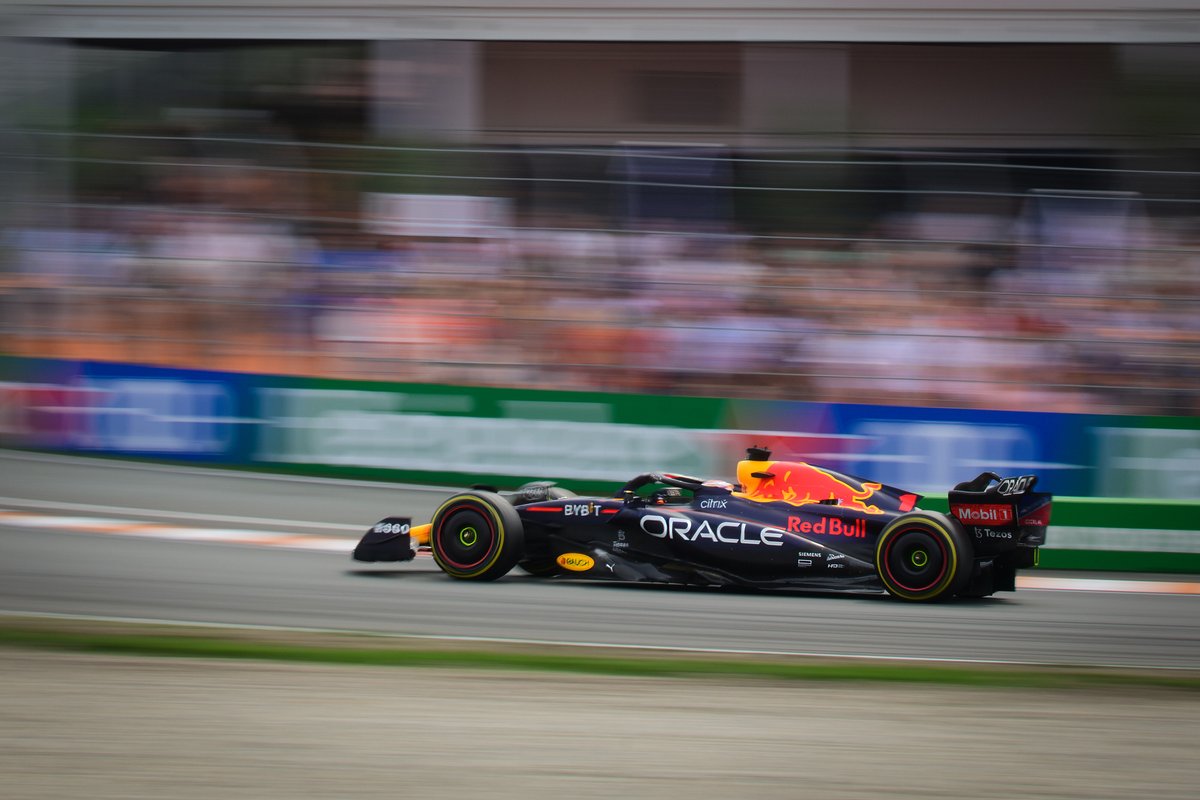
Red Bull and Porsche looked like a certainty…but now the union looks dead in the water
Photo by: Erik Junius
8. The Red Bull-Porsche deal is not the certainty we all thought
It was going to be announced at the Austrian GP in early July, but the FIA delayed approving the 2026 power unit regulations. Then Moroccan legal documents revealed a 4 August date for the tie-up to go public. However, that day came and went with nothing being revealed. Then Audi, against early expectation, leapfrogged its sister manufacturer to confirming its F1 participation. And now, it seems as though the Red Bull-Porsche collaboration might not happen at all.
Team boss Christian Horner has spoken previously about how important it is that any Red Bull partner aligns with the Milton Keynes squad’s ‘philosophy’. While Porsche offered a reassuring 10-year deal to safeguard the future of the team as Red Bull co-founder Dietrich Mateschitz approaches his eighties, the partnership seems to be hanging in the balance due to a culture clash.
Porsche, it appears, wants to be much more hands on than Red Bull would like – with the preferred option surely to take the millions of euros and Porsche stickers plus headed note paper, but to continue as a highly successful autonomous operation. As a result, for a union that was once assumed to be nothing more than a poorly kept secret, it now seems as though Porsche is just a likely to be jilted as it is to be wedded.
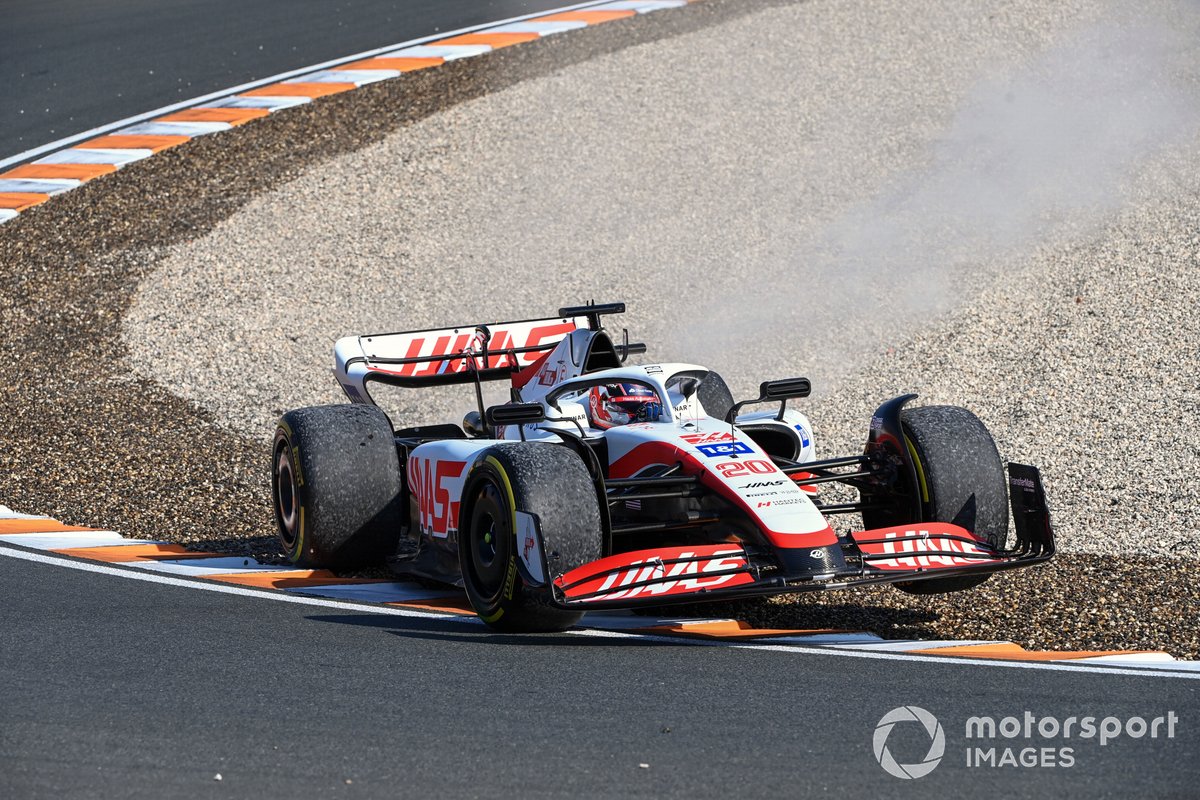
The resin surface protected the gravel from pervading the track
Photo by: Mark Sutton / Motorsport Images
9. A resin resolution to track limits could be in the offing
Amid the fallout of the CRB ruling and the small matter of Max Verstappen landing victory in front of a capacity home crowd, a detail that might have been missed was Zandvoort’s new take on policing track limits.
In a bid to preserve the historic venue’s nature and prevent drivers from taking liberties, circuit chiefs were loathed to bin off punishing gravel traps in favour of acres of asphalt run-off. However, the problem then lies with cars skating out wide and dragging a load of gravel back onto the circuit when they rejoin.
As such, to avoid repeated red and slippery surface flags, Zandvoort debuted a one-metre strip of resin run-off, whereby the gravel has been effectively glued in place. The section is bumpy and slippery so remains a deterrent for drivers attempting to push their luck, but the surface isn’t prone to being torn apart and deposited on track.
That the race wasn’t red flagged when drivers missed the chicane, and that this new technique hasn’t been a major talking point over the weekends suggests it at least wasn’t a retrograde step. Circuit chiefs are willing to let other tracks adopt the resin resolution.
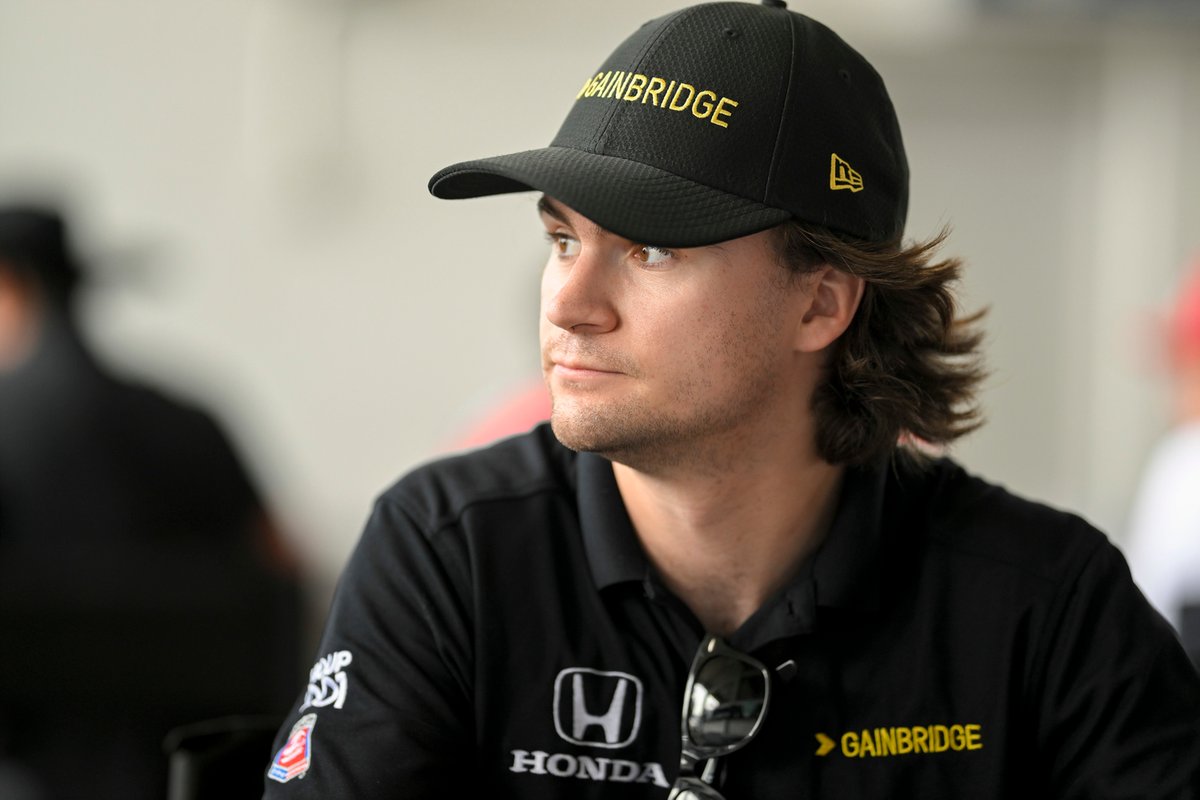
AlphaTauri wants Colton Herta for 2023, and a failure to sign him could stop Gasly moving to Alpine
Photo by: Gavin Baker / Motorsport Images
10. F1 has cracked America, but won’t let America crack F1
A sold-out race in Texas, the blockbuster inaugural round in Miami and the statement Las Vegas Grand Prix coming in 2023 shows that F1 is now finally a smash hit in the United States. It had doubled down on its booming Netflix-induced American audience. There might therefore be an expectation for the championship to make hay while the sun shines by doing everything it realistically can to accommodate an American team and/or driver, too. But no.
Michael Andretti’s bid to buy his way into the paddock has faced widespread resistance from teams and F1 CEO Stefano Domenicali. And the big boss has now also cast doubt over AlphaTauri’s plans to court IndyCar driver Colton Herta in the event of Pierre Gasly switching to Alpine.
With only 32 of the required 40 points to his name, Herta is not eligible for a superlicence. Asked at Zandvoort if there were grounds to make an exception, Domenicali said: “The sport needs to respect the rules. There is a ladder to follow, there is a protocol to respect, and that is the situation. So, it’s really what I believe is right to do. I don’t think it’s right to change something retrospectively, I think the right thing to do is to apply the rules.”
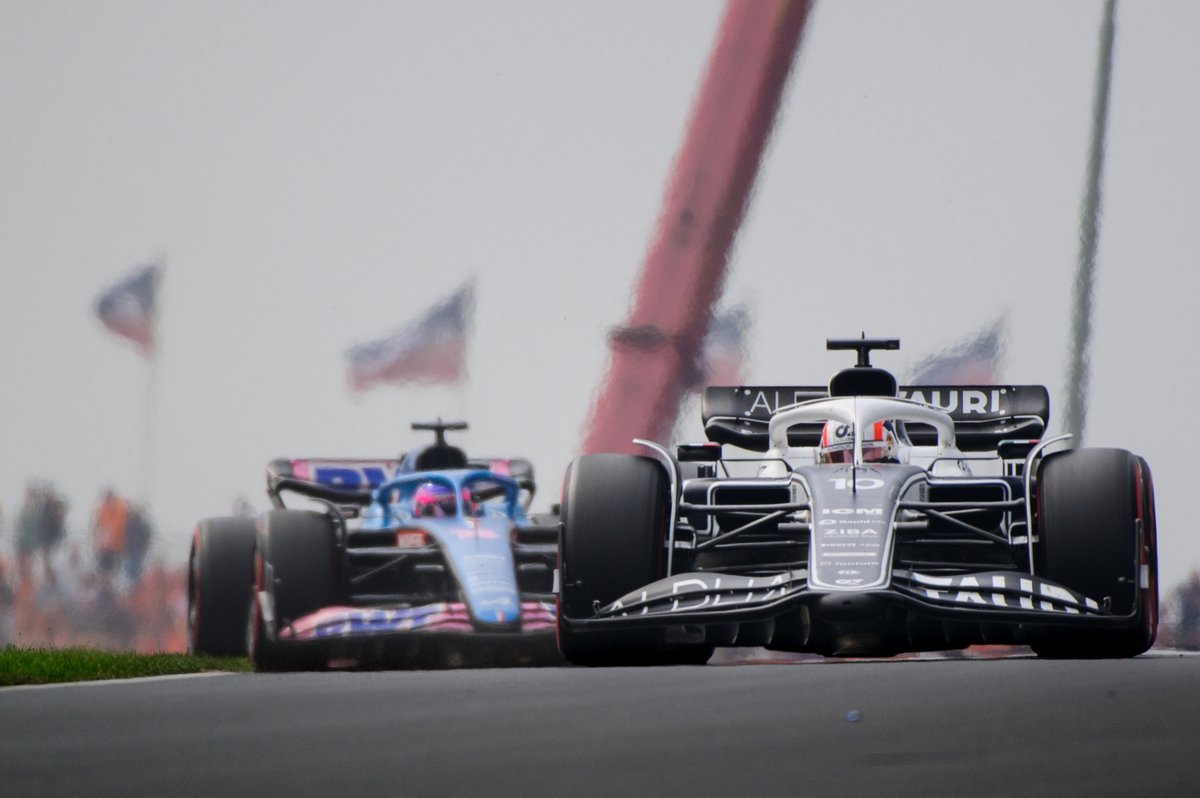
Could Gasly be staying put at AlphaTauri after all?
Photo by: Erik Junius

